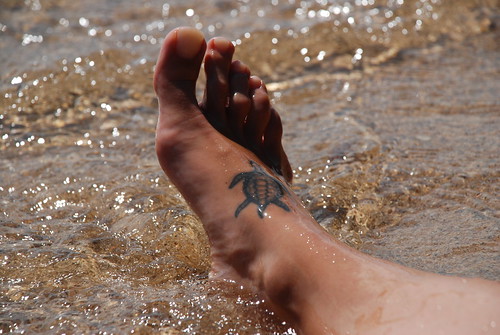
In Foot Steps Orthotics Pty Limited v Foot Science International Limited [2011] NZIPOPAT 5 (11 April 2011) we see a patent application for an orthotic insert survive an obviousness and subject matter challenge. We also see an acknowledgement that many patentable inventions are collocations of known parts.
The patent application
Foot Steps Orthotics Pty Limited (the applicant) filed New Zealand patent application 534105 on 15 January 2003. The application claimed priority from an Australian provisional application filed on 16 January 2002.
Claim 1 of the patent reads as follows:
1. An orthotic insert having a first and a second portion, said first and second portions being formed from heat mouldable ethyl vinyl acetate, said second portion adapted to provide support in the heel region of a person’s foot and being formed of a material of higher resistance to deformation than said first portion, wherein said insert is heat mouldable to conform to said person’s foot such that to fit said insert to said person’s foot said insert is heated until it softens sufficiently to permit an upper supporting surface of said insert to conform to said person’s foot to provide desired biomechanical support and then subsequently cooled, where upon cooling said upper supporting surface of said insert retains the shape to which it has conformed, and wherein said second portion has a substantially J-shaped configuration which extends partially around the periphery of said insert corresponding to said heel region and arch region of said person’s foot and a lateral section of said second portion extends above said upper supporting surface of said first portion to support said arch region of said person’s foot.Foot Science International Limited (the opponent) unsuccessfully challenged the claims on the grounds that they were obvious in view of prior publication, obvious in view of prior use and that they did not relate to an invention. It is this last ground that is worth discussing a little more.
Broadening of invention
The applicant argued that the definition of ‘invention’ has broadened over the years and referred to Hughes Aircraft Company [1995] NZIPOPAT 3 (3 May 1995) (see my blog post). According to Hughes:
“...there has over the years been a progressive widening of the boundaries of subject matter which fall within the definition of ‘invention’ and that the Commissioner must give the benefit of any doubt as to patentability to the applicant.”The applicant also highlighted a useful summary of relevant case law in George N Haddad v The Commissioner of Patents [2000] NZIPOPAT 8 (2 May 2000) (see my blog post), which states that the Hearing Officer in Hughes:
“...quoted with approval and applied the test cited in the Australian Patent Examiners’ Manual: Does the invention claimed involve the production of some commercially useful effect?”The Hearing Officer noted that Hughes and Haddad relate to broadening the definition of invention to include subject matter that may have not comfortably fitted within the traditional interpretations of ‘manner of manufacture’.
The cases did not really relate to the matter of patentability of collocations vis-à-vis ‘mere’ collocations which is what the opponent had raised under this ground.
Mere collocation
The opponent pointed to 5 essential features of claim 1. These are:
- a first and second portion.
- the second portion has a density greater than the first portion.
- the orthotic can be heated, moulded to a person’s foot, and it then retains its shape when cooled.
- the second portion is ‘J’-shaped to provide support around the heel and to the arch region.
- the second portion overlaps the first portion at the arch region.
The opponent said that all of these features were individually and severally known. It said that each of these features formed part of the common general knowledge before the priority date. It said that each of the features performs its own proper function in a predictable and known manner. The features did not interrelate to produce a new or improved result.
The applicant referred to British Celanese Ltd v Courtaulds Ltd (1935) 52 RPC 171 at 193:
It is accepted as sound law that a mere placing side by side of old integers so that each performs its own proper function independently of any of the others is not a patentable combination, but that where the old integers when placed together have some working inter-relation producing a new or improved result then there is patentable subject-matter in the idea of the working inter-relation brought about by the collocation of the integers.
The applicant said there were three conditions to be satisfied for a combination to be patentable:
- The combination of known integers/components is a new combination.
- The new combination of known integers/components provides an improvement or enhancement over that of the sum of individual integers/components. In other words, the components of the combination need to have some working interrelationship.
- That it is not obvious to combine these known integers/components.
The Hearing Officer acknowledged that many [patentable] inventions are collocations of parts that are known in the art.
He concluded that the claims related to an invention. He observed that it had not been shown to him that the combination was not new. He said the applicant seemed to have created a novel orthotic which is simple in construction, easy to manufacture, and that can be easily fitted to a patient’s foot. He had already found that the combination was not obvious.
Further steps
The Hearing Officer dismissed the opposition and ordered that the patent application proceed to issue.
Photo courtesy of author Marco Abis under Creative Commons licence.
The idea of orthotic insert to the foot seems good to me, there is nothing new in that but still something is there. Now the patent is under issue, don't know what is goign to happen.
ReplyDelete